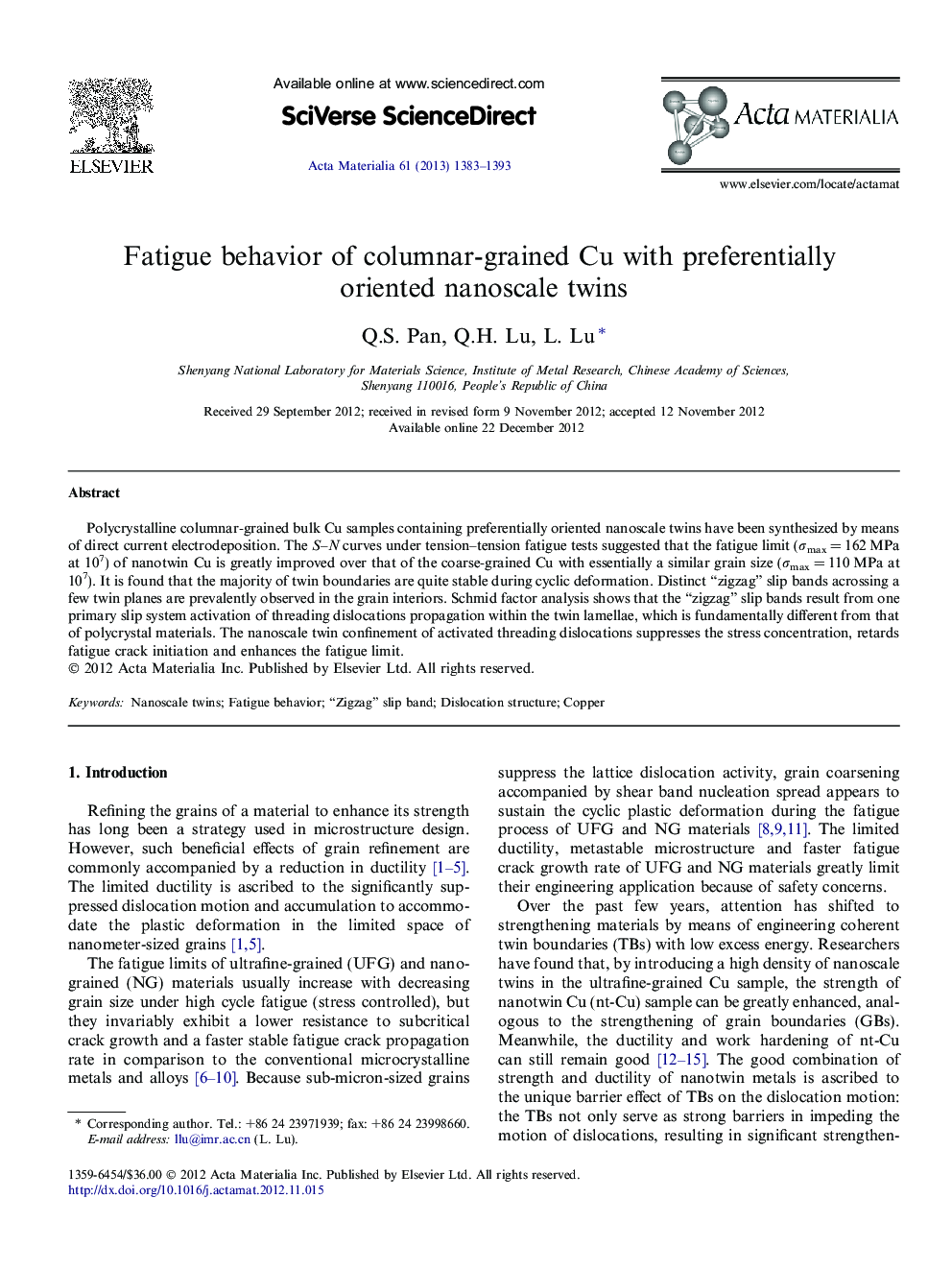| Article ID | Journal | Published Year | Pages | File Type |
|---|---|---|---|---|
| 1446368 | Acta Materialia | 2013 | 11 Pages |
Polycrystalline columnar-grained bulk Cu samples containing preferentially oriented nanoscale twins have been synthesized by means of direct current electrodeposition. The S–N curves under tension–tension fatigue tests suggested that the fatigue limit (σmax = 162 MPa at 107) of nanotwin Cu is greatly improved over that of the coarse-grained Cu with essentially a similar grain size (σmax = 110 MPa at 107). It is found that the majority of twin boundaries are quite stable during cyclic deformation. Distinct “zigzag” slip bands acrossing a few twin planes are prevalently observed in the grain interiors. Schmid factor analysis shows that the “zigzag” slip bands result from one primary slip system activation of threading dislocations propagation within the twin lamellae, which is fundamentally different from that of polycrystal materials. The nanoscale twin confinement of activated threading dislocations suppresses the stress concentration, retards fatigue crack initiation and enhances the fatigue limit.
